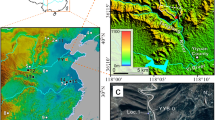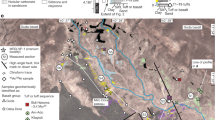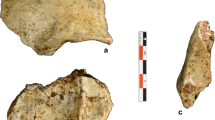Abstract
The age of Pleistocene Homo sapiens fossils and archaeological material from the Bouri Formation in the Middle Awash region of Ethiopia, discovered in 1997 by White and colleagues1,2, has been constrained to between 160 ± 2 and 154 ± 7 kyr on the basis of isotopic dating and stratigraphic and geochemical evidence2. However, our analysis of their stratigraphic and geochronological data indicate that, although the estimated maximum age (160 ± 2 kyr) is valid, the minimum age (154 ± 7 kyr) is doubtful. These important discoveries3 may therefore be distinctly younger than reported1,2
This is a preview of subscription content, access via your institution
Access options
Subscribe to this journal
Receive 51 print issues and online access
$199.00 per year
only $3.90 per issue
Buy this article
- Purchase on Springer Link
- Instant access to full article PDF
Prices may be subject to local taxes which are calculated during checkout
Similar content being viewed by others
References
White, T. D. et al. Nature 423, 742–747 (2003).
Clark, J. D. et al. Nature 423, 747–752 (2003).
Stringer, C. Nature 423, 692–695 (2003).
Chernet, T. et al. J. Volcan. Geotherm. Res. 80, 267–280 (1998).
Author information
Authors and Affiliations
Corresponding author
Rights and permissions
About this article
Cite this article
Faupl, P., Richter, W. & Urbanek, C. Dating of the Herto hominin fossils. Nature 426, 621–622 (2003). https://doi.org/10.1038/426621a
Issue Date:
DOI: https://doi.org/10.1038/426621a
This article is cited by
-
Age of the oldest known Homo sapiens from eastern Africa
Nature (2022)
Comments
By submitting a comment you agree to abide by our Terms and Community Guidelines. If you find something abusive or that does not comply with our terms or guidelines please flag it as inappropriate.



